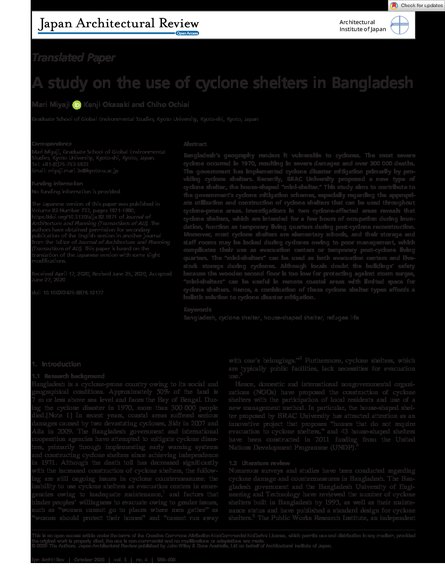
Bangladesh's geography renders it vulnerable to cyclones. The most severe cyclone occurred in 1970, resulting in severe damages and over 300 000 deaths. The government has implemented cyclone disaster mitigation primarily by providing cyclone shelters. Recently, BRAC University proposed a new type of cyclone shelter, the house-shaped “mini-shelter.” This study aims to contribute to the government's cyclone mitigation schemes, especially regarding the appropriate utilization and construction of cyclone shelters that can be used throughout cyclone-prone areas. Investigations in two cyclone-affected areas reveals that cyclone shelters, which are intended for a few hours of occupation during inundation, function as temporary living quarters during post-cyclone reconstruction. Moreover, most cyclone shelters are elementary schools, and their storage and staff rooms may be locked during cyclones owing to poor management, which complicates their use as evacuation centers or temporary post-cyclone living quarters. The “mini-shelters” can be used as both evacuation centers and livestock storage during cyclones. Although locals doubt the buildings' safety because the wooden second floor is too low for protecting against storm surges, “mini-shelters” can be useful in remote coastal areas with limited space for cyclone shelters. Hence, a combination of these cyclone shelter types affords a holistic solution to cyclone disaster mitigation.